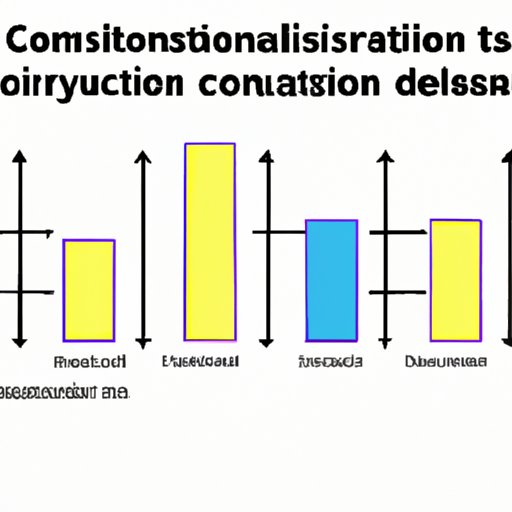Introduction
A concentration gradient refers to the gradual change of concentration of particles between two areas. It is the difference in the concentration of particles in a substance between two points. Understanding concentration gradient is essential for biology and chemistry students, researchers, and professionals. It plays a significant role in various biological and chemical processes, and this article will explore its different aspects.
Exploring the Concept of Concentration Gradient: How It Affects Biological Systems
Biology is a discipline that relies heavily on concentration gradient. It is a critical concept in living organisms since particles are continually moving from an area of high concentration to an area of low concentration. This process is essential in different biological systems such as nutrient uptake, blood circulation, and waste removal.
In blood circulation, for instance, red blood cells transport oxygen from the lungs, where the concentration of oxygen is high, to other parts of the body, where the concentration of oxygen is comparatively low. Nutrient uptake in plants and animals is also linked to concentration gradient. Nutrients move from areas of high concentration to areas of low concentration until they reach equilibrium. Similarly, the removal of waste from biological systems is facilitated by concentration gradient.
Therefore, concentration gradient plays a significant role in vital biological systems, and its understanding is crucial to further research and discoveries in the field.
Understanding Concentration Gradient and Its Relationship to Diffusion and Osmosis
Diffusion is the movement of particles from high concentration to low concentration until equilibrium is reached. Osmosis, on the other hand, occurs when water molecules move from an area of low concentration to high concentration.
Concentration gradient plays a key role in both diffusion and osmosis. During diffusion, the concentration gradient determines the direction of movement of particles. In osmosis, the concentration of solute particles determines the direction of water molecules. High solute concentration leads to lower water concentration, while lower solute concentration leads to higher water concentration.
For instance, consider a scenario where a cell is submerged in a solution with a higher concentration of solutes. Such a scenario leads to hypertonic conditions, where the cell will lose water to the high concentration solution leading to cell shrinkage. Consequently, the cell will shrink, dehydrate, and ultimately, die if the solute concentration remains high.
Mastering the Basics: Concentration Gradient and Its Importance in Chemistry and Biology
While concentration gradient plays a crucial role in both biology and chemistry, there are fundamental differences between the two.
In chemistry, the concentration gradient is dependent on the volume of a solution, the concentration of solutes, and the temperature. A higher solute concentration can lead to more significant interactions between molecules, leading to more collisions and higher concentration gradients. When we increase the temperature, we increase the energy of the solvent particles leading to higher kinetic energy resulting in faster movement, collisions, and ultimately, higher concentration gradient.
Concentration gradient is critical in chemical processes such as the movement of ions based on concentration gradient or flux, and the transport of small molecules like oxygen and carbon dioxide in the body are examples of concentration gradient in biology.
Breaking Down Concentration Gradient: A Beginner’s Guide to Molecular Movement
Molecules move randomly due to kinetic energy, but their movement is not consistent. Factors like temperature, size, and concentration affect molecular movement. A concentration gradient influences molecular movement and determines the direction of movement of molecules.
For instance, when a perfume bottle is opened in a room, the fragrance molecules move from an area of high concentration to low concentration, leading to a spread of the fragrance throughout the area.
The Influence of Concentration Gradient on Cellular Processes and Their Significance in Medicine
Concentration gradient plays a significant role in cellular processes such as protein synthesis and membrane transport. In protein synthesis, different molecules like amino acids move from high concentration to low concentration, resulting in the formation of proteins.
Similarly, concentration gradient influences the transport of molecules across the cell membrane. Cells can only take in specific molecules such as glucose, nutrients, and electrolytes through protein pumps or channels that rely on concentration gradient.
Understanding concentration gradient is also crucial in medicine. The development of drugs that can be efficiently transported across cell membranes is dependent on its understanding. Drug delivery systems are based on the concentration gradient since it influences how drugs are transported to different parts of the body.
Conclusion
Concentration gradient is a critical concept in chemistry and biology. This article has explored how concentration gradient influences different biological and chemical processes such as blood circulation, nutrient uptake, and waste removal in biological systems. Additionally, it has examined its role in different areas like molecular movement and drug delivery. Consequently, understanding concentration gradient is of vital importance to biological and chemical experts.
Final thoughts
The importance of concentration gradient in both chemistry and biology cannot be overemphasized. It is a key concept that plays a significant role in various systems and processes. Understanding it is a prerequisite for carrying out successful research in these fields and, ultimately, advancing the current body of knowledge. Thus, it is imperative to prioritize the study of concentration gradient in science curricula and encourage its study in higher education.
